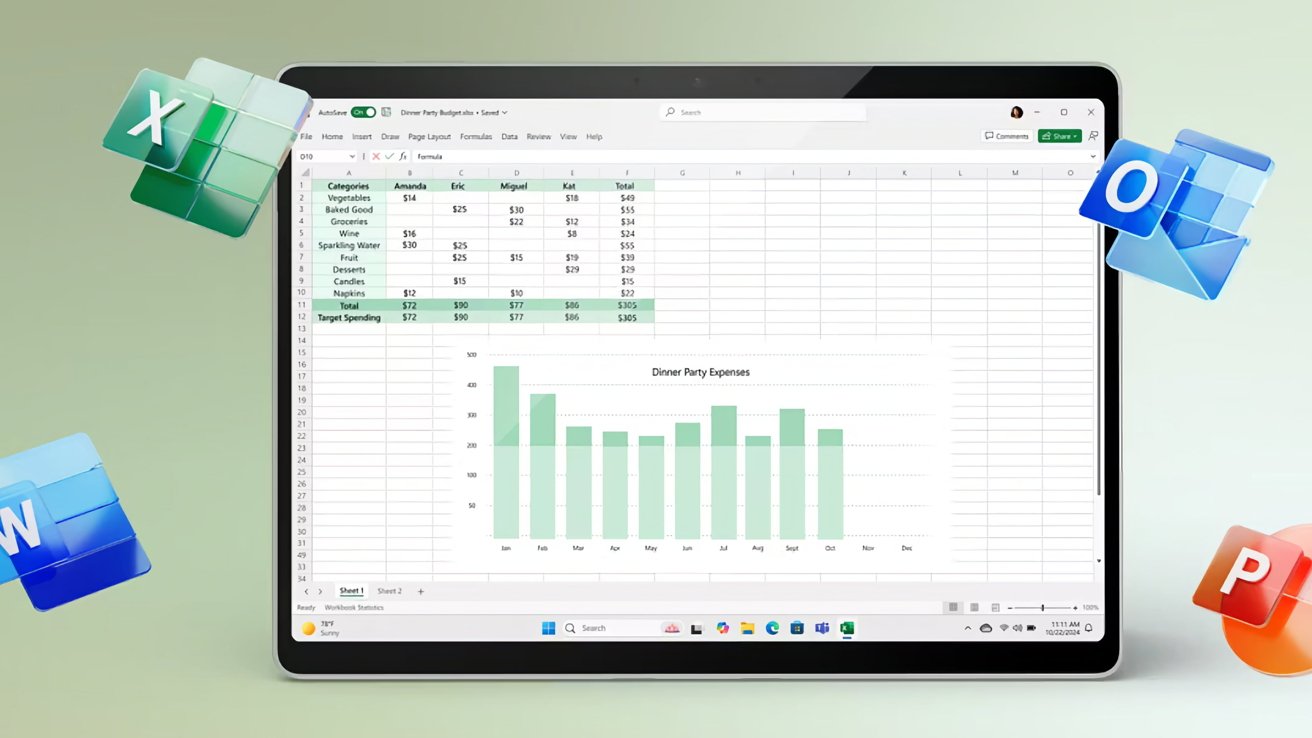
A new standalone release of Microsoft Office 2024 for macOS is available, giving users an alternative to paying for a Microsoft 365 subscription.
Standalone versions of Microsoft Office are an occasional release, giving users permanent access to the productivity suite for a one-time purchase. On Monday, Microsoft introduced its newest version for Mac and PC.
Microsoft Office 2024 provides what Microsoft refers to as “locked-in-time versions” of Word, Excel, PowerPoint, OneNote, and Outlook.
The “locked-in-time” comment refers to how the standalone won’t have the benefits of consistent feature updates that the Microsoft 365 version receives. However, it can be cheaper in the long term since it’s a single payment instead of a subscription.
In the release, Mac users will benefit from new changes, including customizable swipe left and right gestures in Outlook when using a trackpad of a Magic Mouse. Scheduled emails and a Focused Inbox are also included.
Word 2024 now has improved session recovery, with it opening all documents that were open before an unexpected app closure.
PowerPoint adds Cameo, allowing you to add a live camera feed on top of a slide. Users can also create a video of their presentation, embed Microsoft Stream videos on SharePoint, and add closed captions for video and audio.
Excel benefits from speed improvements, 14 new text and array functions, an Image function to pull pictures from the Internet, and dynamic charts with dynamic arrays.
Across multiple apps, users can insert images from an Android device, there’s support for OpenDocument Format 1.4, and improvements to accessibility tools. There’s also a new default Office theme that uses Fluent Design principles.
Microsoft Office 2024 is available in two variants, with Office Home 2024 at $149.99 including Word, Excel, Powerpoint, and OneNote. Office Home & Business 2024 for $249.99 adds on top Outlook and the rights to use it commercially.
The minimum requirements list support for Intel and Apple Silicon running macOS Ventura or later, with 4GB of memory and at least 10GB of disk space.




